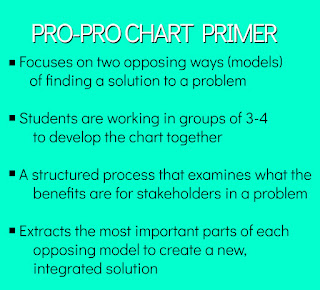Teaching and Learning with Desmos
| Me and my math classmate and helper Nikolina |
The other day, Jamie asked whether I wanted to become a student again for a math period. All for it, I grabbed my laptop (as I was told I needed it), and ran for the portable. You see, Jamie was doing a little recording of Stephanie Briggs’ Grade 10 math class for the upcoming OAME (Ontario Association for Mathematics Education) conference, where Briggs will be presenting on teaching using Desmos with Todd Malarczuk. I had heard of Desmos, the online graphing calculator, because well, Jamie won’t ever stop talking about it! As an art teacher, I never really knew what he was always so excited when Desmos was mentioned. So here was my chance to see what all the fuss was about.
I settled into a group, hoping that my new math classmates might help guide me through the period. I have to say, it is a little intimidating diving back into high school math, not having done so SINCE high school *cough* a few years ago. Briggs introduced the day’s topic quadratic equations in vertex form and did a quick review of standard form and factored form. I calmly wrote down the equations that she was putting on the board and pretended to follow along. Really though, I was panicking a little because right from the top, I was lost. I didn’t know what the formulas were supposed to do, and even what all the letters in the formula meant. I sidled up to my new math pal, Nikolina, praying that she could help, and she was great. She quietly explained the formulas we had just written down.
Next, Desmos! Students seemed excited to get started and they were ready, devices in hand. We were doing “marble slides” , where you were trying to create the shape of the parabola so that marbles slide down the parabola and pass through stars. Kind of a like a phone game, but with MATH! The only problem was, I had no idea how to manipulate the formula to alter the shape of the parabola, and we weren’t given specific instructions on what to do. Frozen, and unsure how to proceed, it wasn’t until I confirmed with my seatmates that it was ok to just start stabbing in numbers and see what happened. Trial and error, look for patterns, trial and error, look for patterns... Try, fail, learn. Try, fail, learn. Now I was starting to get it! A little journey of self-discovery, which is why Briggs didn’t tell us what to do. Brilliant! Slowly I figured out what would happen when I changed the numbers and how it affected the parabola.
Then, all of a sudden, Stephanie Briggs paused the activity for all of us. We were locked out! There was a chorus of collective groans from the students because they were so engaged and invested in what they were doing! With the class’ full attention again, she did a quick revisit of the formulas we were using, asking about what we had learned so far about how the numbers in the formula affected the parabola. It was an interesting and effective use of a pause in the activity! After consolidating our thoughts on the process so far, gleaning a bit more understanding in the process, she un-paused the activity, allowing us to get back into sending marbles through our parabola slides. I was getting the hang of this, starting to gain confidence and have fun with it. Not bad progress seeing as I was blindly stabbing in numbers only a few minutes earlier. Briggs was constantly circulating through the room checking in with each group individually during the activity. The whole goal of the activity was for us to discover and develop what vertex form was, which for me and students at my table group, seemed to be sticking a lot more than if we were just told what vertex form was.
| Stephanie Briggs circulating and helping students through the Desmos activity |
All in all, it was an insightful window into Math exploration. I found it a little like the math equivalent of getting a new type of paints that I’d never used before and just going for it and seeing what happens. I don’t recall that kind of open ended exploration and play in my math classes. Students are definitely better for it. Thanks to Ms. Briggs for the lesson, now I can see why they get so giggly and excited every time Desmos is mentioned!
If you feel like exploring some of the other Activities provided by Desmos, head over here.
If you want some Desmos activities, organized by course, to use in your class, head over here.
If you want some Desmos activities, organized by course, to use in your class, head over here.

Comments
Post a Comment